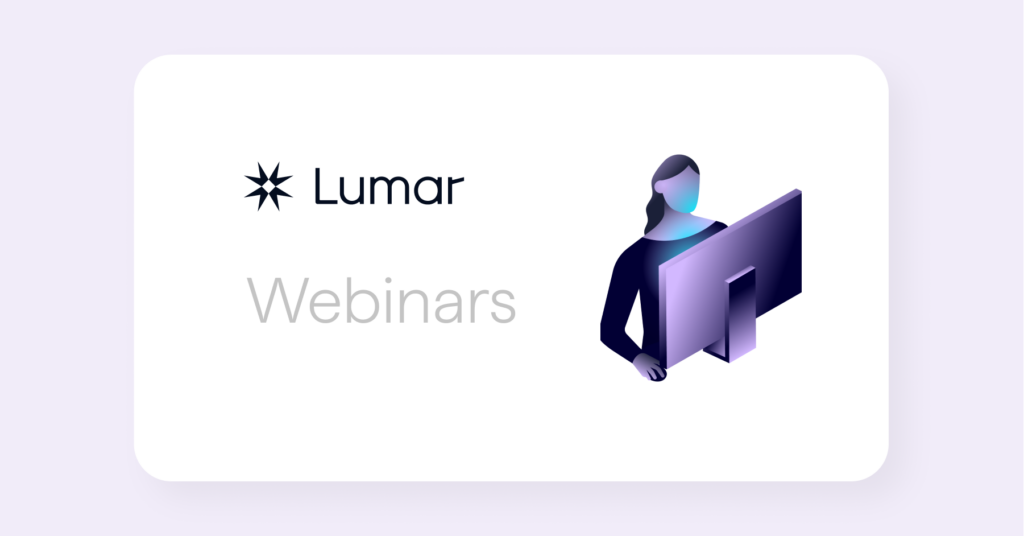The latest episode in Deepcrawl’s long-running webinar series is a deep dive into how to create SEO best practices and processes for your business—at any scale.
Last week, Deepcrawl’s Sr. Technical SEO, Jamie Indigo, hosted a fireside chat with Cox Automotive’s Chris Nichols, Sr. Manager of Enterprise SEO and Product Management. (Cox Automotive is a major leader in the automotive space and the parent company of big-name brands including Autotrader.com and Kelley Blue Book.)
Watch the full webinar in the video above (including Q&A session), or read on for our key takeaways—covering everything from how to build a sector-leading SEO team to the challenges of being future-facing within a shape-shifting discipline like SEO.
What does it look like to run SEO for some of the world’s largest automotive websites?
Nichols has been with Cox for nine years and has watched the company grow to include a number of both wholesale and customer-facing auto brands. Altogether, AutoTrader.com and Kelly Blue Book alone amount to around 20 million pages – meaning Nichols and his colleagues are responsible for a massive amount of online real estate, with a non-stop changing inventory of listings to keep optimized.
Working at this scale calls for a great deal of caution, oversight, and testing—and an exceptional team structure to implement changes efficiently on multiple extra-large websites. Their SEO team is structured around website section owners working collaboratively with product and scrum teams.
“We have people who specialize… We have one person that oversees listings. One person that oversees service and repair. One person that oversees the data. And each one of these people works with a product manager/product owner that works with the scrum teams to help get the changes pushed through. We work very, very closely with a number of scrum teams across the business to implement the changes we need.”
Nichols and his teams also devote time to SEO forecasting. They strive to have a handle on what’s coming down the pipe in terms of Google algorithm changes, new developments in the automotive space, and understanding what future implementations they need to prepare for so they don’t fall behind.
“When we bring people on, we really want to make sure they fit the culture,” he adds. “We really nurture that. Collaboration is something we thrive on. We all have weak spots and that’s not a fault. There’s always something somebody can learn. But [it’s important to] surround yourself with really smart people.”
Getting buy-in from stakeholders and executives
Nichols’ tech SEO team sits within Cox’s Product department rather than in Marketing. They interact with the executive leadership team daily, making sure that they have the larger organizational information needed to make the right decisions for their websites’ health and search performance.
“We track consumer value on the site, so we know what value per visit looks like,” he says. “When we start looking at that and the traffic that we’re getting, it’s really easy for us to say, if we need to allocate resources, that we want to look at bringing on a scrum team or bringing on a tool like Deepcrawl.”
By understanding the value per visit, the team knows how many additional visits they need to cover the costs of the resources they are asking for. They can look at the cost of a new SEO resource and work backward from there by asking themselves things like, how many visits do we need to achieve to show the return on this investment? It can help get leadership buy-in to understand these kinds of commercial metrics.
“Some of the harder ones are when you’re trying to do something new where there is no search volume; some cutting edge product or something new you’re introducing to a market,” he says. “It’s really hard to quantify, but you can start backing into click-through rates, and you still know your value per visit, and you know your conversion rates for the next step. It’s a little more tricky to do, but it’s still a good process to walk through because once you can start showing the value of your work, or where you could go, it’s a lot easier to get buy-in. It also helps to have VPs and SVPs who have some level of SEO knowledge that really help pioneer and give us the runway we need to push the work through.”
Implementing technical capabilities
As a rule, Nichols and his SEO team generally don’t touch source code or Javascript; they work with scrum teams and an agile methodology, going through sprint cycles to build out their backlog and refine and prioritize what needs to get done. They also have to ensure the scrum teams and developers really understand what they’re talking about—communication is key. So Nicholes strives to speak the same language as his engineers and makes a point to go back to them after something has been implemented to show them how it’s worked and what impact their work has had.
The challenge of creating SEO processes at scale
To help make SEO changes at scale across multiple teams, Cox has certain processes in place to help ensure things run smoothly. Each section of the website has dedicated scrum teams, SEOs, and PMs that own it to help streamline SEO implementation while adhering to general companywide website principles. There’s a framework used across teams, but also a specialist who can flag when there might be a need for more flexibility. They can then test more flexible needs against their user acceptance criteria.
“It’s making sure that the acceptance criteria are correct. We clearly state exactly what’s needed in every single feature or user story … [for example,] making sure you have a self-referential canonical in place when it’s needed,” Nicholes says, “Everything goes through User Acceptance Testing—what we call UAT— to make sure it hits everything in the acceptance criteria .”
And if something goes wrong or needs to be fixed quickly, the close relationships Nichols’ tech SEO team has with others in the organization ensures that, generally, they can get it sorted promptly.
Prioritizing Technical SEO vs. Content SEO
For Nichols, SEO at Cox is not a case of prioritizing one over the other. He is clear that both are run in parallel, with the technical SEO specialists collaborating with their content producers – working in tandem to achieve any given goal.
He says, “At the end of the day, it’s about delivering the best consumer experience available.”
It’s about seeing both content and technical SEO more holistically, prioritizing as needed, and reflecting on how both aspects of SEO fit into what the business wants to achieve overall.
Best practices and top tips to achieve SEO success
One takeaway is that you should definitely plan for SEO, but you cannot always plan too far in advance.
“We definitely go through a roadmap process – in Q4 we’ll be planning out for the following year,” he says. “But there are times when you need to adjust on the fly. You can’t predict what Google’s going to do in 6 months.”
On top of volatility in the search industry, Nichols is mindful of fluctuations in the automotive sector itself – with supply issues and the impact it has on car values, etc., all being subject to change relatively quickly.
“We have to roll with it and do what’s best for the consumer,” he adds.
Ultimately, when it comes to defining SEO success for himself and his team, it always comes back to the customers who are using the websites and their satisfaction with the experience. While they track KPIs like value and visits and balance this against their forecasts, at the end of the day, he says, “it’s about providing more value to the consumer. That’s the first thing we look at.”



